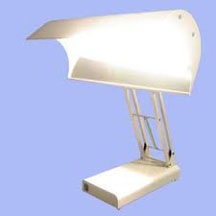Holiday Insomnia
By Patty Liston
 This article is just a little tongue-in-cheek. Yes, we have trouble sleeping during the holidays because there so much to do and to think about. Will Aunt Edna like the scarf? Did I defrost the turkey/ham/tofu long enough? Will it ever stop snowing?
This article is just a little tongue-in-cheek. Yes, we have trouble sleeping during the holidays because there so much to do and to think about. Will Aunt Edna like the scarf? Did I defrost the turkey/ham/tofu long enough? Will it ever stop snowing?
That said, there are some foods we should be aware of that can inhibit our sleep as well as encourage us to get the rest we need. Getting enough quality sleep is just as important as eating right and getting enough exercise. Sleep deprivation will turn us into a walking, cooking, wrapping, partying zombie. Not a very pretty picture.
According to Dr. Timothy Morgenthaler of the Mayo Clinic, here are some things we CAN do prior to going to bed, that may help:
 • Eat something that is high in protein like peanut butter.
• Eat something that is high in protein like peanut butter.
 • Having too many carbs before going to bed causes glucose spikes that will wake us up 2-3 hours after going to bed. If you have to have that bowl of cereal or toast, eat items that are high in fiber and grains.
• Having too many carbs before going to bed causes glucose spikes that will wake us up 2-3 hours after going to bed. If you have to have that bowl of cereal or toast, eat items that are high in fiber and grains.
 • Have a bowl of oatmeal.
• Have a bowl of oatmeal.
 • Don't eat late! Your body may keep you awake trying to digest what you ate just before going to bed. Some spicy foods can also cause heartburn. Quit eating by 7 PM to allow time for your food to digest
• Don't eat late! Your body may keep you awake trying to digest what you ate just before going to bed. Some spicy foods can also cause heartburn. Quit eating by 7 PM to allow time for your food to digest
 • Avoid alcohol and caffeine which interfere with our sleep. It can take up to 8 hours for the stimulating effects of caffeine to wear off!
• Avoid alcohol and caffeine which interfere with our sleep. It can take up to 8 hours for the stimulating effects of caffeine to wear off!
 • Don't want to wake up to go to the restroom during the night? Stop drinking liquids an hour before going to bed. Get your necessary 8-10 glasses of water throughout the day and you should be well hydrated.
• Don't want to wake up to go to the restroom during the night? Stop drinking liquids an hour before going to bed. Get your necessary 8-10 glasses of water throughout the day and you should be well hydrated.
Seasonal Affective Disorder
 Otherwise known as SAD, this disorder can cast its own spell over our sleep patterns and mood swings. Seasonal Affective Disorder is often due to the shorter hours of day-light - think lack of SUNLIGHT. For those who may struggle with depression during the dark months of winter, researchers have found that "light therapy" has shown to be very beneficial for those who struggle with SAD.
Otherwise known as SAD, this disorder can cast its own spell over our sleep patterns and mood swings. Seasonal Affective Disorder is often due to the shorter hours of day-light - think lack of SUNLIGHT. For those who may struggle with depression during the dark months of winter, researchers have found that "light therapy" has shown to be very beneficial for those who struggle with SAD.
 "Light therapy or phototherapy (classically referred to as heliotherapy) consists of exposure to daylight or to specific wavelengths of light using lasers, light-emitting diodes, fluorescent lamps, dichroic lamps or very bright, full-spectrum light, usually controlled with various devices. The light is administered for a prescribed amount of time and, in some cases, at a specific time of day."
"Light therapy or phototherapy (classically referred to as heliotherapy) consists of exposure to daylight or to specific wavelengths of light using lasers, light-emitting diodes, fluorescent lamps, dichroic lamps or very bright, full-spectrum light, usually controlled with various devices. The light is administered for a prescribed amount of time and, in some cases, at a specific time of day."
One of our sons had this problem during the winter months and purchasing a desk light specific to this issue, helped him tremendously. In fact, several years later, he is still using it. These lights can be purchased just about anywhere or ordered on-line. Google "Lamps for SAD", and there will be a plethora of information for you to look into. Don't feel that you need to purchase the most expensive brand. Lamps can range in price from $50 to $200. The cheaper one was all that our son needed.

